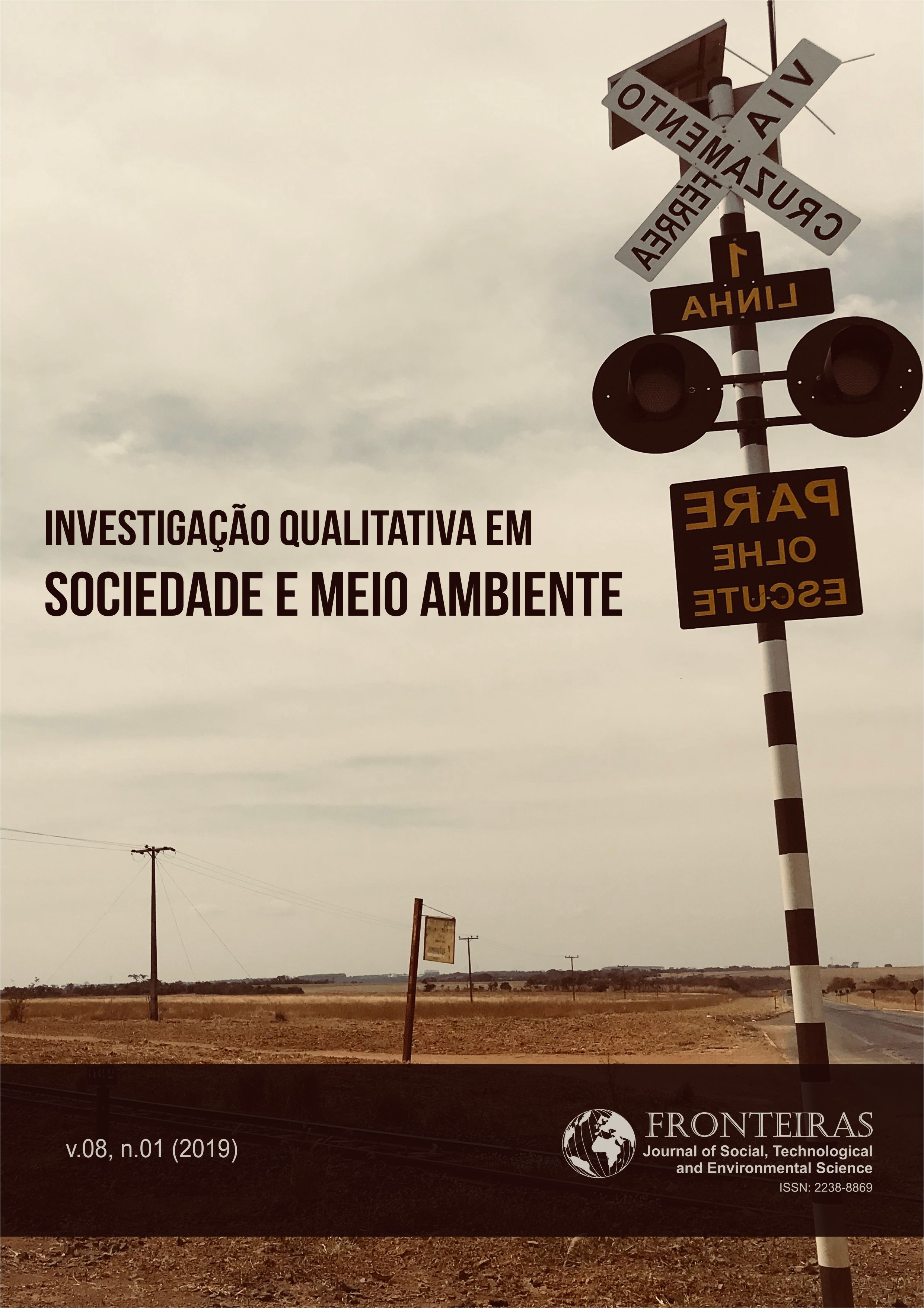Analysis of Average Temperatures And Trends In Brazil: Applying CUSUM Graphic from 2000 to 2014
applying CUSUM graphic from 2000 to 2014
DOI:
https://doi.org/10.21664/2238-8869.2019v8i1.p169-184Palavras-chave:
Gráfico de Soma Acumulativa, Temperatura do Ar, Tendência de Temperatura, Modelagem de TemperaturaResumo
Nas últimas décadas as tendências de temperatura estão se confirmando mais rapidamente. Para determinar as mudanças de temperatura no Brasil foi realizada análise das tendências anuais e por estações do ano tendo por base dados diários de 187 estações meteorológicas, abrangendo o período de 2000 a 2014. As tendências foram confirmadas com a utilização do Gráfico de Soma Acumulativa, este método percebe as alterações em séries mais rápido que outros. A modelagem da temperatura foi obtida por Regressão Múltipla e com a Análise de Cluster foi possível agrupar Estações Meteorológicas. As tendências observadas confirmam oscilações de resfriamento, aquecimento e em alguns casos de resfriamento seguido de aquecimento. As principais tendências apresentadas no período estudado foram a partir de -15 até 0° na latitude. A região com maior confirmação de inversões na temperatura foi o Norte, seguida do Nordeste. Em altitude abaixo de 500 metros é onde apresentou maior tendência. Quanto às estações do ano, o outono contribuiu significativamente com as tendências.
Referências
Bajat B, Blagojevic D, Kilibarda M, Lukovic J, Tosic I 2015. Spatial analysis of the temperature trends in serbia during the period 1961-2010. Theor Appl Climatol, 121(1):289-301.
Balling-JR RC, Michaels PM, Knappenberger P 1998. Analysis of winter and summer warming rates in gridded temperature time series. Clim Res, 9(3):175-181.
Breaker LC 2007. A closer look at regime shifts based on coastal observations along the eastern boundary of the north pacific. Cont Shelf Res, 27(17):2250-2277.
Brunet M, Jones PD, Sigró J, Saladié O, Aguilar E, Moberg A, Della-Marta, PM, Lister D, Walther A, Lopez D 2007. Temporal and spatial temperature variability and change over spain during 1850-2005. J Geophys Res Atmos, 112(D12).
Brunet M, Sigró J, Saladie O, Aguilar E, Jones P, Moberg A, Walther A, López D 2005. Spatial patterns of long-term spanish temperature change. Geophys Res Abstr, (7): 04007.
Devore J L 2015. Probability and Statistics for Engineering and the Sciences. Cengage Learning, Boston, 9 edition.
Efron B, Tibshirani R 1991. Statistical data analysis in the computer age. Science, 253:390-395.
Fischer T, Gemmer M, Liu L, Su B 2012. Change-points in climate extremes in the zhujiang river basin, south china, 1961-2007. Clim Chang, 110(3):783-799.
Gomez JD, Etchevers J, Monterroso A, Gay C, Campo J, Martinez M 2008. Spatial estimation of mean temperature and precipitation in areas of scarce meteorological information. Atmosfera, 21:35-56.
Gurevech G, Hadad Y, Ofir A, Ohayon B 2011. Statistical analysis of temperature changes in israel: an application of change point detection and estimation techniques. Global Nest Journal, 13(03):215-228.
IBGE 2016. Topographic mapping. Brazilian Institute of Geography and Statistics.
Inmet 2015a. Ministry of agriculture, livestock and supply. Brazilian Institute of Meteorology.
Inmet 2015b. Note technical: network stations. Brazilian Institute of Meteorology.
IPCC 2007. Climate change 2007: the physical science basis: summary for policymakers. IPCC. Groupe d'experts intergouvernemental sur l'évolution du climat. Working Group I and Alley, Richard.
IPCC 2014. Climate change 2014: synthesis Report. IPCC. Contribution of working groups I, II and III to the fifth assessment report of the intergovernmental panel on climate change.
Kamruzzaman M, Beecham S, Metcalfe AV 2011. Non-stationarity in rainfall and temperature in the murray darling basin. Hydrol Process, 25(10):1659-1675.
Kerr RA 1992. Unmasking a shifty climate system. Science, 255(5051):1508-1510.
Klein-Tank AMG, Konnen GP 2003. Trends in indices of daily temperature and precipitation extremes in Europe, 1946-99. J Climate, 16(22):3665-3680.
Klein-Tank AMG, Wijngaard JB, Knnen GP 2002. Daily dataset of 20th-century surface air temperature and precipitation series for the european climate assessment. Int J Climatol, 22(12):1441-1453.
Lorentzen T 2015. A statistical analysis of sea temperature data. Theor Appl Climatol, 119(3):585-610.
Montgomery DC 2012. Introduction to statistical quality control. Wiley, New York, 7 edition.
Montgomery DC, Jennings CL, Kulahci M 2015. Introduction to time series analysis and forecasting. John Wiley & Sons, New Jersey, 2 edition.
Montgomery DC, Runger GC 2010. Applied statistics and probability for engineers. John Wiley & Sons.
Philandras CM, Nastos PT, Repapis C 2008. Air temperature variability and trends over Greece. Global Nest J, 10(2):273-285.
Roberts SW 1966. A comparison of some control chart procedures. Technometrics, 8(3):411-430.
Toreti A, Desiato F 2008. Temperature trend over italy from 1961 to 2004. Theor Appl Climatol, 91(1):51-58.
Torgovitski L 2015. A darling-erdos-type cusum-procedure for functional data. Metrika, 78(1):1-27.
Unkasevic M, Vujovic D, Tosic I 2005. Trends in extreme summer temperatures at Belgrade. Theor Appl Climatol, 82(3):199-205.
Vincent LA, Peterson TC, Barros VR 2005. Observed trends in indices of daily temperature extremes in South America 1960-2000. J Climate, 18(23):5011-5023.
Walpole RE, Myers R H, Myers SL, Ye K 2011. Probability & statistics for engineers & scientists. Pearson, United States of America, 9 edition.
Wang H, Chen Y, Li W 2015. Characteristics in streamflow and extremes in the Tarim river, china: trends, distribution and climate linkage. Int J Climatol, 35(5):761-776.
Zhang X, Shao X, Hayhoe K, Wuebbles DJ 2011. Testing the structural stability of temporally dependent functional observations and application to climate projections. Electron J Statist, 5:1765-1796.
Downloads
Publicado
Como Citar
Edição
Seção
Licença
Esta revista oferece acesso livre imediato ao seu conteúdo, seguindo o princípio de que disponibilizar gratuitamente o conhecimento científico ao público proporciona maior democratização mundial do conhecimento.
A partir da publicação realizada na revista os autores possuem copyright e direitos de publicação de seus artigos sem restrições.
A Revista Fronteiras: Journal of Social, Technological and Environmental Science segue os preceitos legais da licença Creative Commons - Atribuição-NãoComercial 4.0 Internacional.


